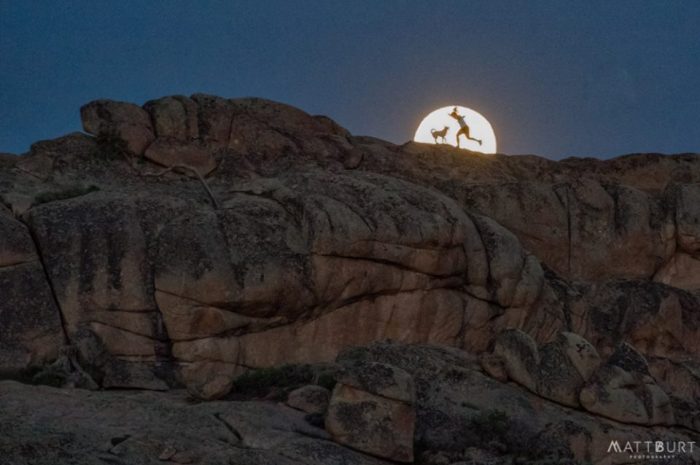
Watch for a full-looking moon on the eve of the June solstice (June 19, 2016) and a full moon on the solstice itself (June 20). From what we’ve been able to gather (sources below), this is the first full moon to fall on the June solstice since the year 1967, which some recall as the year of the Summer of Love, a social phenomenon centered on San Francisco, London and other places around the globe. There’ve been a number of near misses of full moons on June solstices, however. And we are indeed talking about the June solstice, not solstices in general. In fact, there was a full moon eclipse on the December solstice in 2010.
Reliably, the phases of the moon recur on or near the same calendar dates every 19 years. It’s the “or near” that causes the full moon to miss the solstice on that 19th year, sometimes. Nineteen years from this year’s solstice – on June 20, 2035 – the full moon will not fall on the same date as the June solstice. It’ll be another near miss, with the full moon falling on June 20, 2035, and the solstice arriving one day later.
It appears as if the full moon and June solstice won’t fall on the same calendar date again until June 21, 2062.
Be aware that, as we’re figuring all this, we’re using Universal Time (UT or its variant UTC), what used to be called Greenwich Mean Time. Universal Time is the favorite of astronomers because it applies to Earth as a whole. What if we used other time zones? Well, for instance, if we use U.S. time zones, the last full moon and the June solstice actually coincided on June 21, 1986.
On June 20, 2016, the moon turns full at 11:02 UTC. The solstice arrives some 11.5 hours later, at 22:34 UTC.

There’s something else special about this full moon, in addition to its falling on the solstice. It marks the fourth of four full moons in between the March 2016 equinox and the June 2016 solstice. Usually, there are only three full moons in one season (between an equinox and solstice, or vice versa), but sometimes there are four.
The third of four full moons to take place in a single season has its claim to fame: it’s sometimes called a seasonal Blue Moon (in contrast to a Blue Moon by the definition of second full moon in a calendar month). The most recent Blue Moon by the seasonal definition occurred on May 21, 2016, or one lunar month before this solstice full moon.
Okay so … seven times in 19 calendar years, a season has four full moons. And in cycles of 19 years, the moon phases fall on or near the same calendar dates.
It should be no surprise that – sure enough, 19 years from now – we’ll have four full moons in between the March 2035 equinox and June 2035 solstice, and the full moon on May 22, 2035, will count as the third of four full moons in one season – a seasonal Blue Moon.
Want to know more about the seven seasonal Blue Moons in the next 19-year cycle? Click here.

The last time a full moon fell on a solstice generally was in 2010 – the December solstice of December 21, 2010, when the full moon staged an exceedingly rare December solstice total lunar eclipse. There is amazingly accurate Gregoriana eclipse cycle of 372 years, featuring the recurrences of eclipses with the seasons, as defined by solstices and equinoxes.
We find a total lunar eclipse last happening on the December solstice 372 years ago, on December 21, 1638. Looking 372 years ahead of 2010, to the year 2382, we find a December solstice partial lunar eclipse on December 21, 2382. And 19 years after that, in 2401, there’s a December solstice total lunar eclipse on December 21, 2401.
Stellaphane equinox and solstice calculator
Six millennium catolog of phases of the moon
Solstices and equinoxes: 2001 to 2100
Read more: How often does a solar eclipse happen on the March equinox?
Bottom line: Solstice and full moon both fall on June 20, 2016, for the first time since 1967, aka the Summer of Love.











